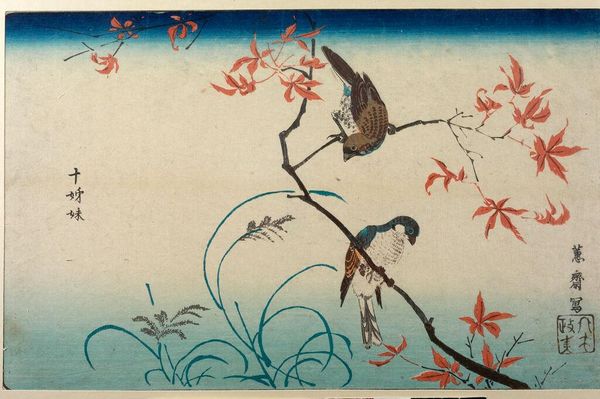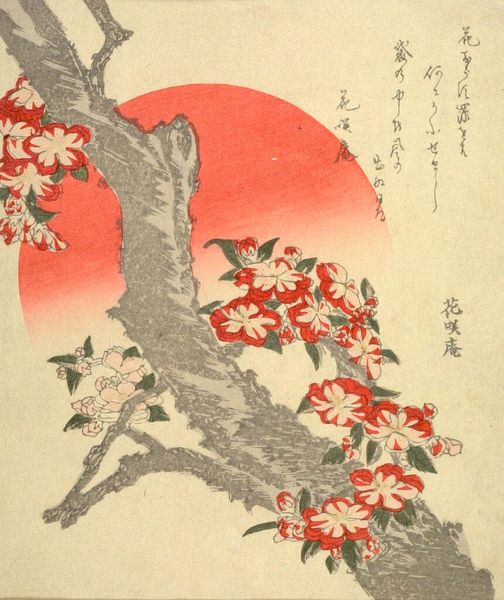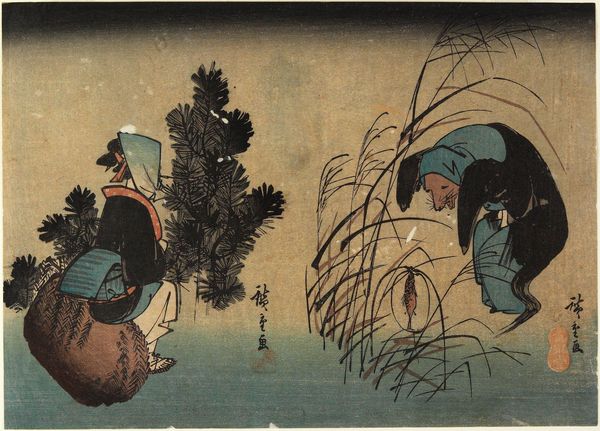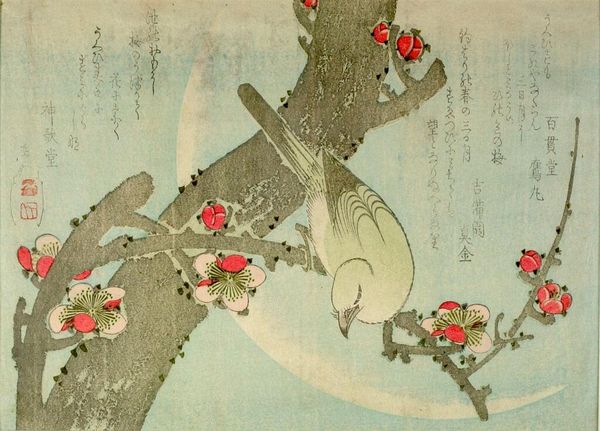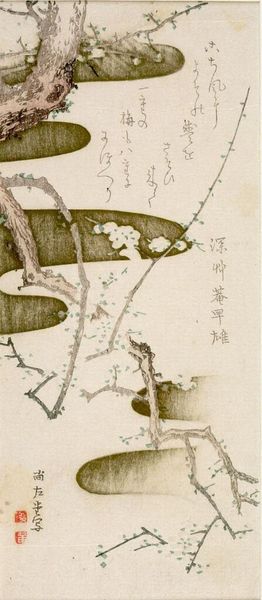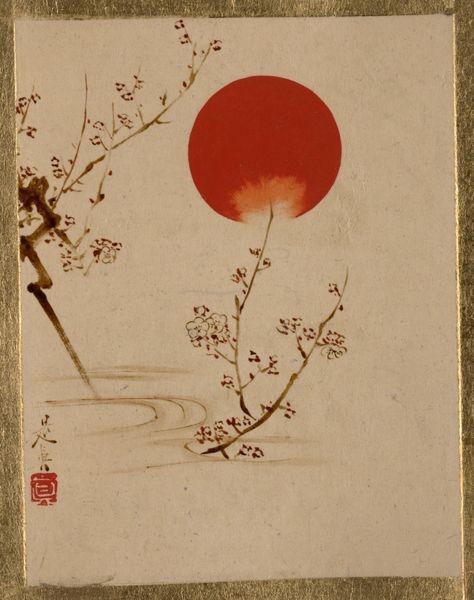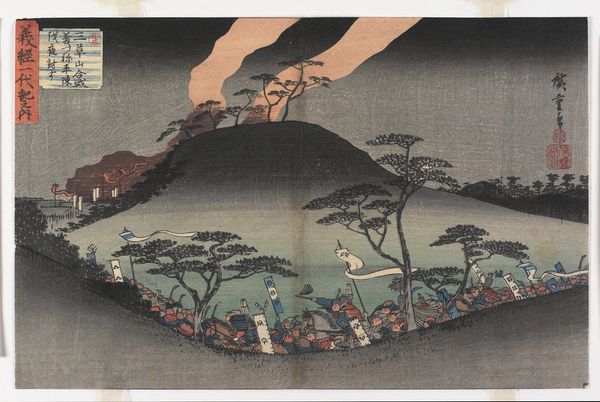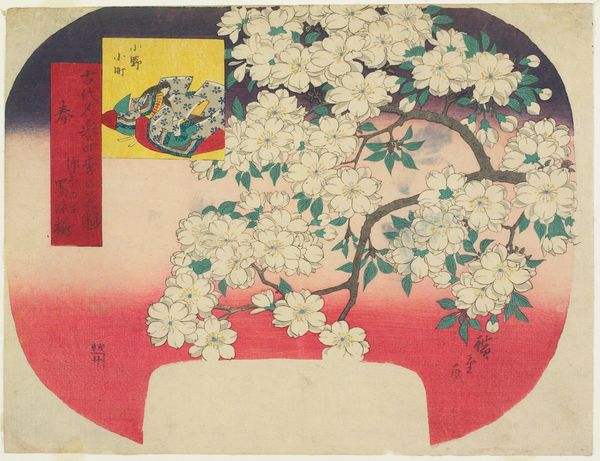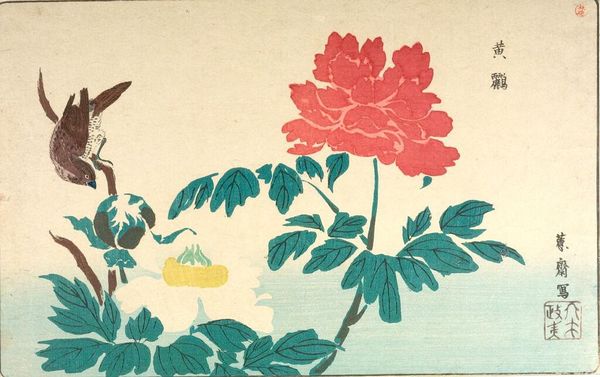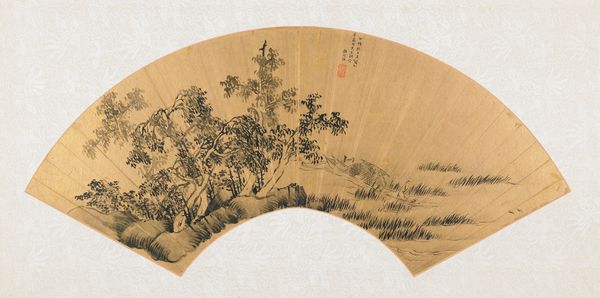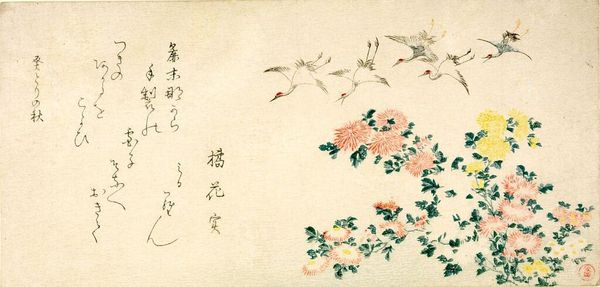
painting, watercolor
#
water colours
#
painting
#
asian-art
#
flower
#
ukiyo-e
#
leaf
#
watercolor
#
plant
#
decorative-art
#
mixed media
#
decorative art
Copyright: Public domain
Curator: I'm struck by the overall effect – the delicate balance of forms. The subtle, muted color palette feels so refined. Editor: It's Utagawa Hiroshige's "Chrysanthemums," executed in what appears to be mixed media, including watercolors, belonging to the Ukiyo-e tradition. Immediately I'm drawn to how these flowers, a popular motif, connect with themes of mortality, beauty, and societal status during the Edo period. The composition seems laden with encoded cultural meaning. Curator: Certainly. Consider how the artist's focus directs our gaze, inviting a formal analysis. Note the fan shape itself and how it’s partitioned into visually distinct quadrants using varied patterns, setting up tensions and releases across the piece. The flowers, though delicately rendered, feel firmly planted within this grid. Editor: It’s crucial to acknowledge that fans in the Floating World functioned as much more than simple fashion accessories; they were potent status symbols reflecting gendered expectations and power structures. Furthermore, Hiroshige's positioning within the male-dominated Ukiyo-e hierarchy inevitably affected the artwork's reception. We cannot separate form from that reality. Curator: A fair point. Still, if we remove any narrative interpretation for a moment, the placement and execution of these graphic elements form a strikingly unified image. See how the negative space pushes our attention toward those intensely colored leaves and blossoms. It establishes rhythm. Editor: And consider how these specific aesthetic choices could reflect the societal complexities faced during that time, allowing individuals to display symbolic rebellion via seemingly harmless items such as an elegant folding fan. By layering interpretive lenses from historical and feminist perspectives, we are better placed to decode Hiroshige's choices, not merely appreciating formal properties but challenging assumed roles within Ukiyo-e culture and art history at large. Curator: I agree. Bringing those viewpoints enriches my own observation of formal structures present in the artwork. Editor: And analyzing compositions strengthens understanding of what art meant. Perhaps it provides more relevance.
Comments
No comments
Be the first to comment and join the conversation on the ultimate creative platform.
